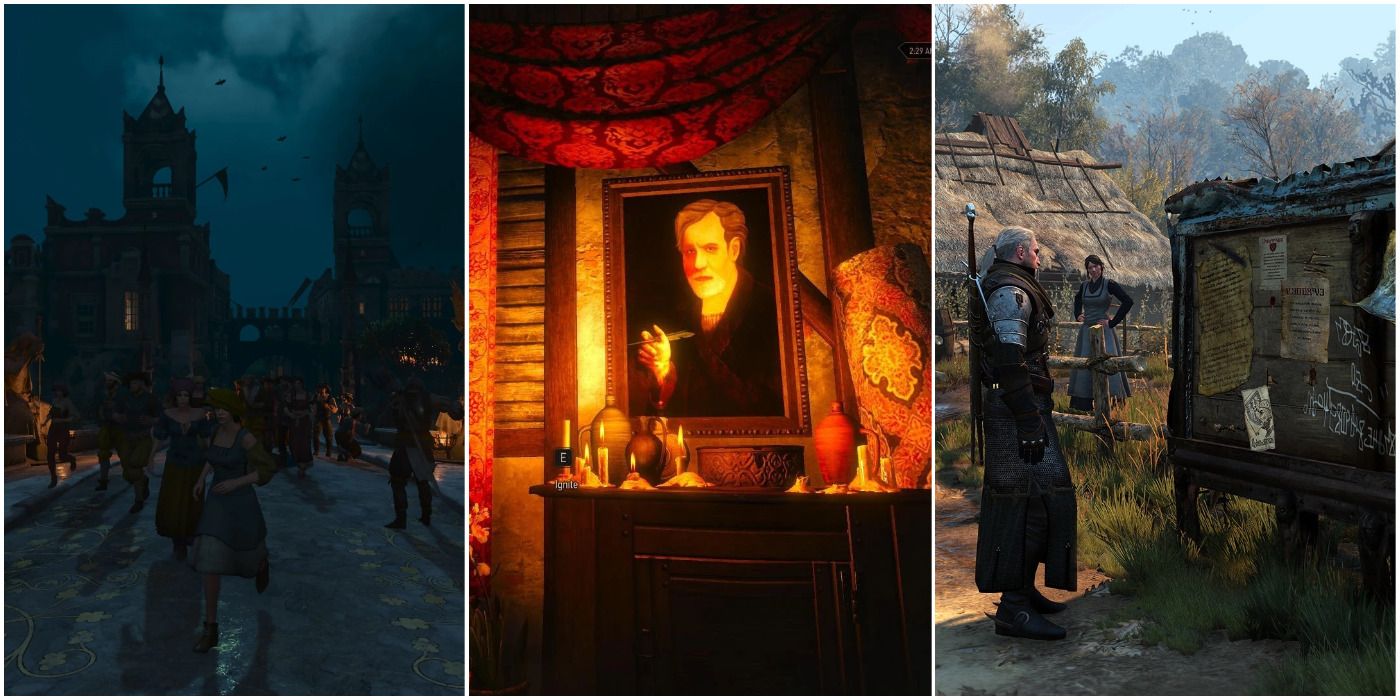
The presence of easter eggs in The Witcher 3: Wild Hunt shouldn't come as a surprise. Video games love pop culture references, especially in open-world titles. As part of the fantasy genre, The Witcher 3 isn't a game that is particularly grounded in reality. Nevertheless, references to our own history still abound in both obvious and subtle ways.
RELATED: The Witcher 3: 10 Literature Easter Eggs You Missed During Your Playthrough
Much like literature, film, and art, the influence that history exerts on video games is often palpable. For history buffs, recognizing these easter eggs is always a treat. Whether it is the name of a quest, a character, or a geographic location, these historical references are just waiting to be found for those with sharp eyes and open ears.
10 The Night Of The Long Knives
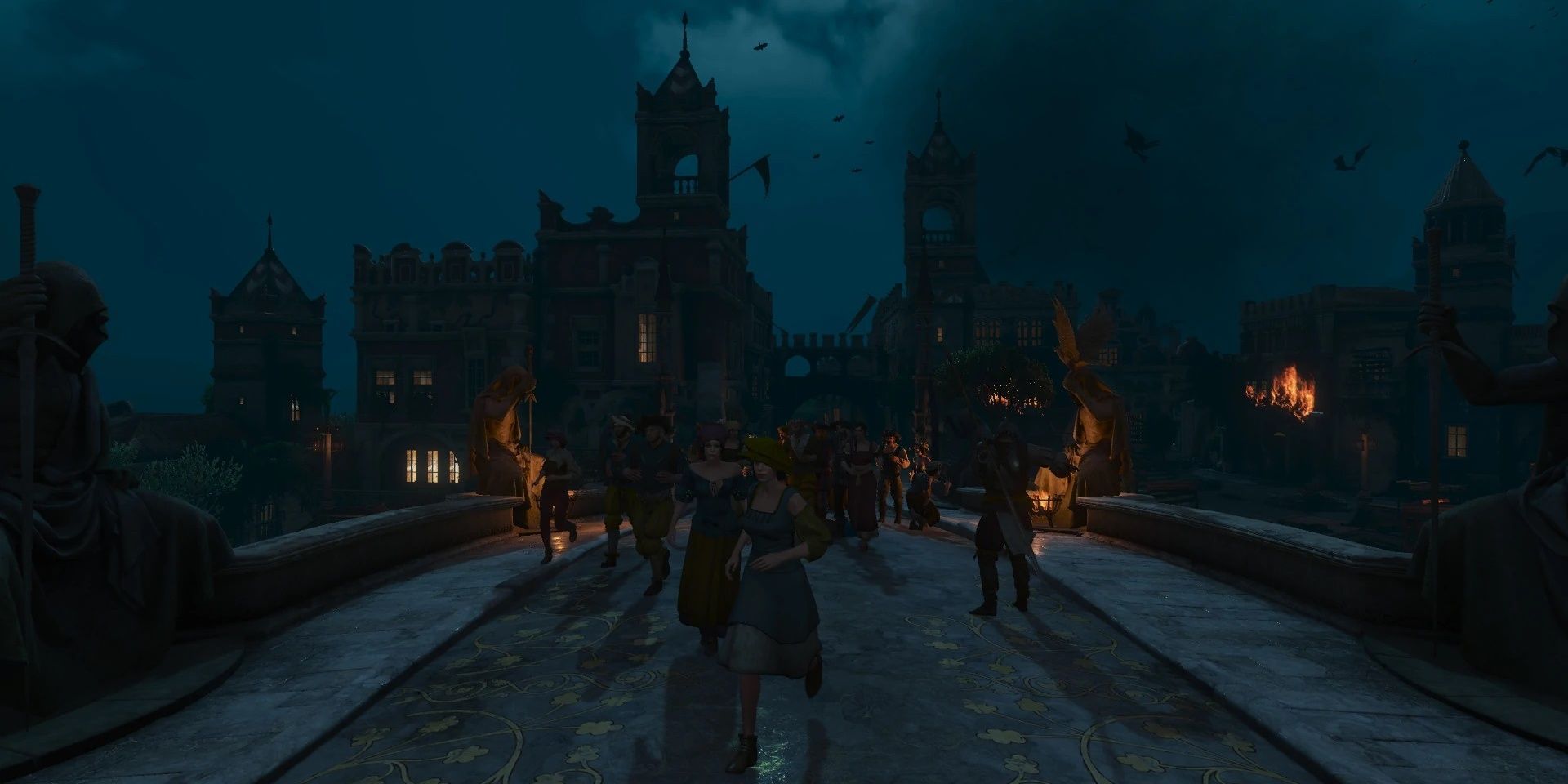
There's no shortage of work to be done for Geralt of Rivia in the Duchy of Toussaint. One encounter in the Blood and Wine expansion sees Geralt fending off a deadly vampire attack. The name of the quest is appropriately titled "The Night of the Long Fangs."
The name of the quest is an allusion to an event that took place in Nazi Germany in the summer of 1934. A violent purge, known to history as "The Night of the Long Knives," took place at the behest of Adolf Hitler in an attempt to solidify his control over the Nazi Party. Thousands of political opponents, along with other Nazi officials deemed disloyal, were arrested and executed in a matter of days.
9 The Stanford Prison Experiment
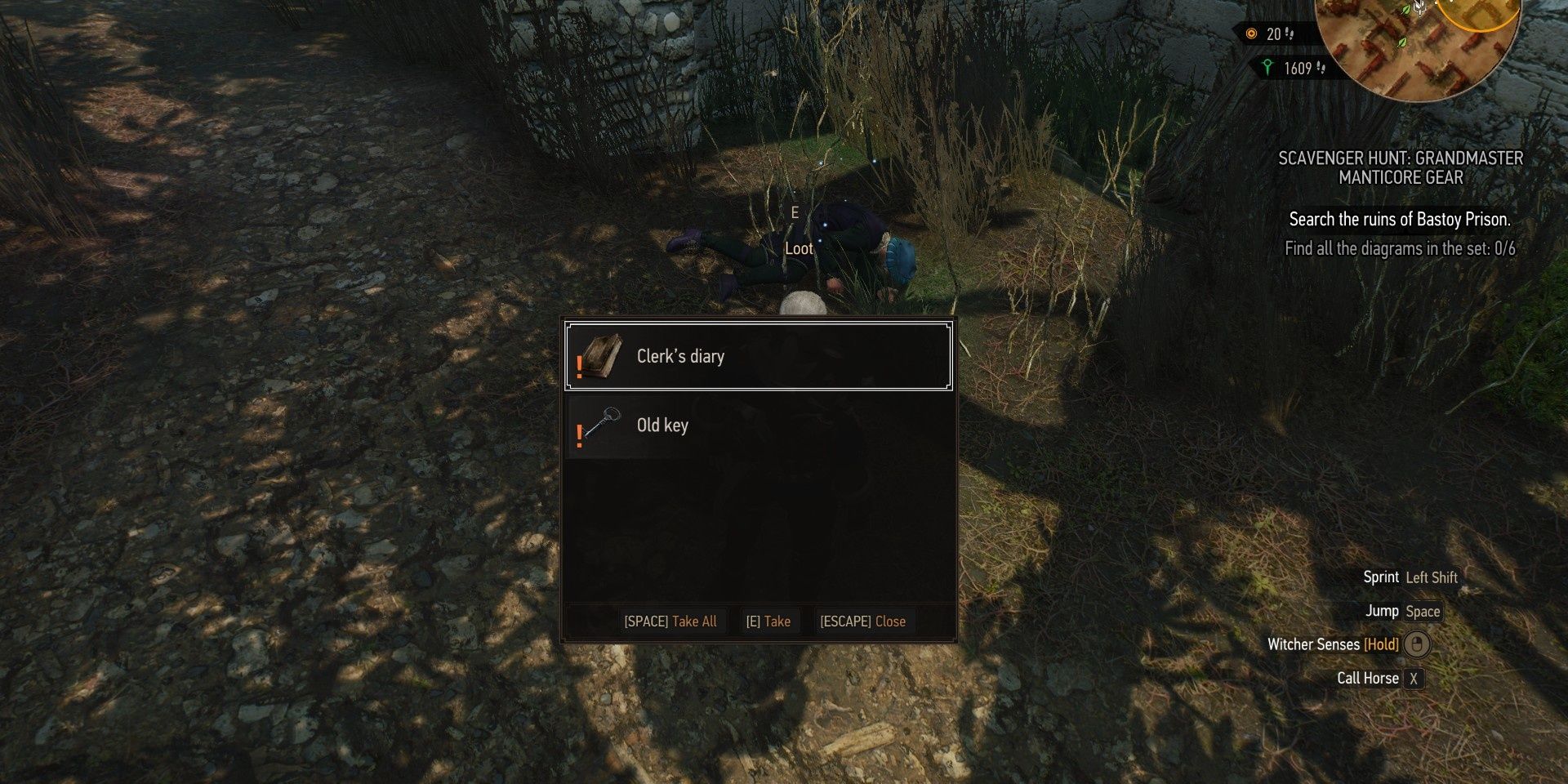
Numerous treasure hunt quests are available to Geralt, which often yield useful items and equipment when completed. Traveling to the ruins of the Bastoy Prison in the Blood and Wine expansion starts a quest titled "The Toussaint Prison Experiment." A work order note found nearby is written by a clerk named Philipp-Jordi Simbardo.
The name of the quest as well as the author of the note are references to the infamous 1971 "Prison Experiment" conducted at Stanford University. Overseen by Dr. Philip Zimbardo, the experiment sought to examine the psychological effects of giving individuals almost unfettered power over others. The experiment simulated the interactions between "prison guards" and "inmates." The exercise was stopped after only six days when it became apparent that the participants started to embrace their new roles a little too much.
8 Leif Erikson
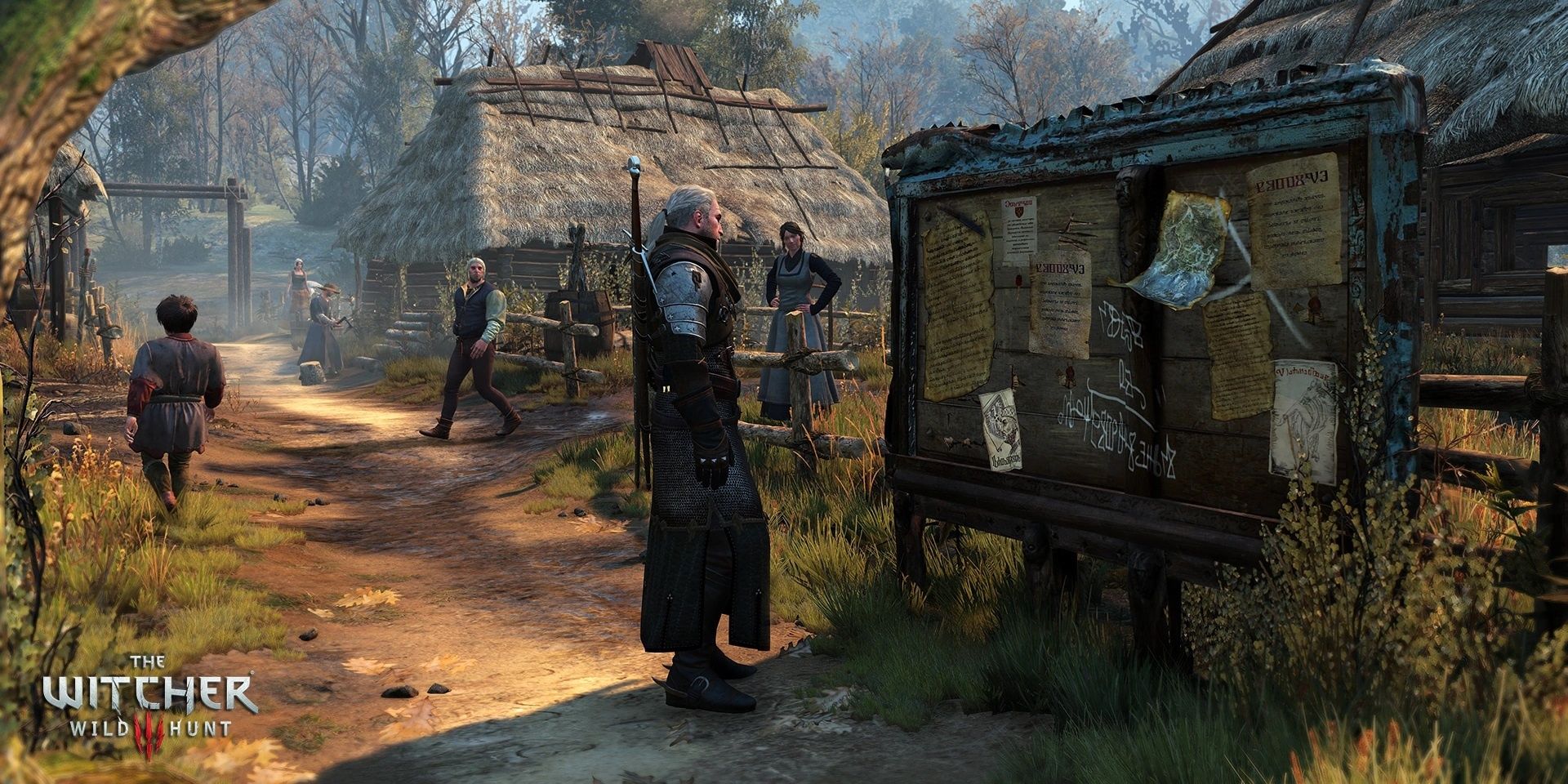
Skellige is filled with adventurous individuals willing to risk their lives for glory and plunder. Notice boards scattered throughout the region sometimes contain humorous bits of information that don't necessarily pertain to any quest. Once notice actually alludes to a famous historical figure.
RELATED: The Witcher 3: 10 Music Easter Eggs You Missed During Your Playthrough
The notice simply reads "Sailing west," and is signed by a man named Leif. This brings to mind the famous Viking explorer Leif Erikson. Erikson is noted for sailing west and establishing the colony of Vinland in North America, almost 500 years before Christopher Columbus.
7 Theodore Roosevelt
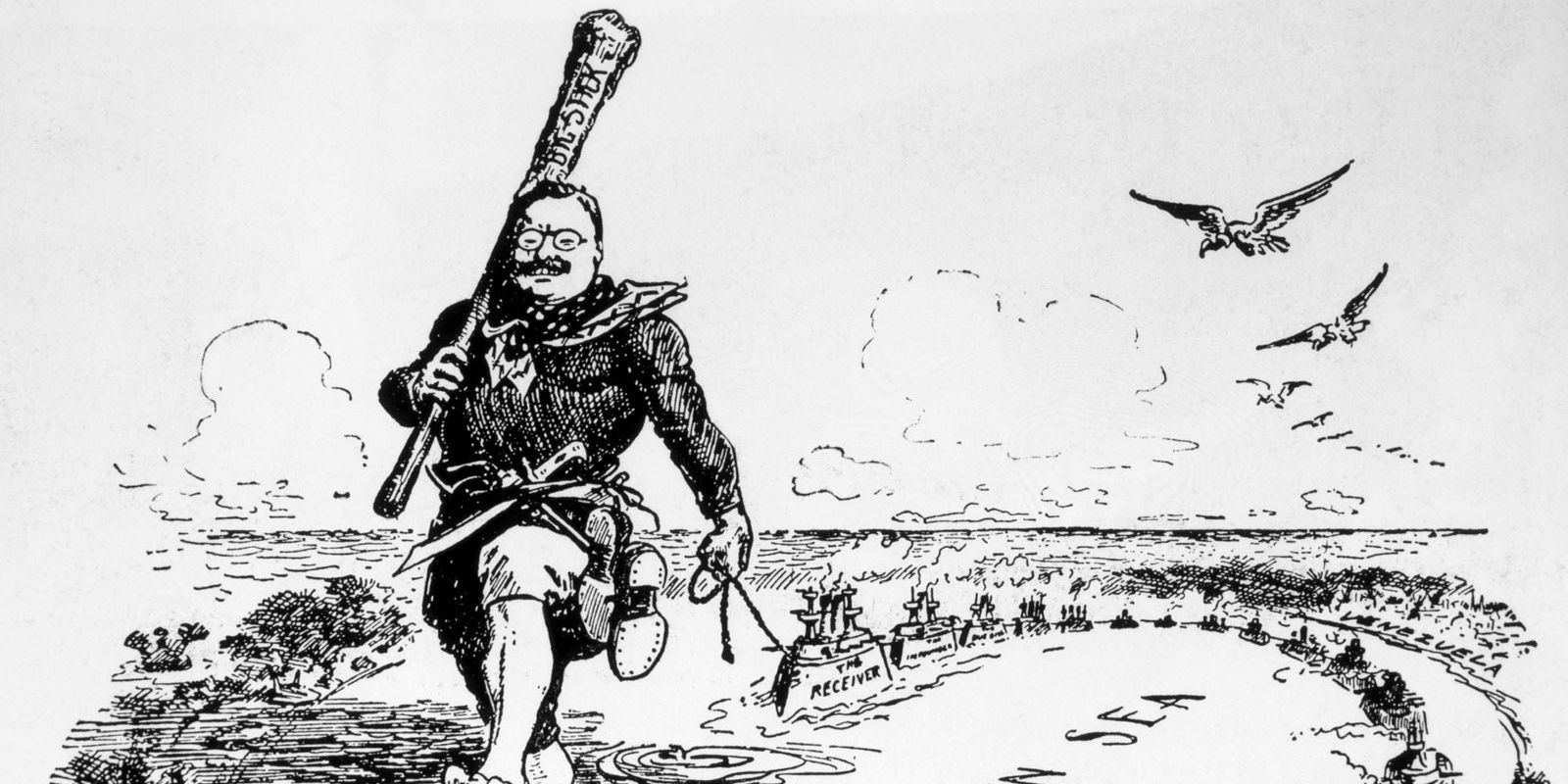
A vast collection of random NPCs populate the many corners of the game's world. They don't offer much besides filling in the background and their inane chattering often becomes quite tiresome after a while. It's easy, therefore, to miss certain easter eggs while tuning them out.
Some NPCs in Beauclair may be heard saying, "Speak softly and carry a big stick." This famous phrase is attributed to Theodore Roosevelt, the 26th President of the United States. The quote references Roosevelt's stance on foreign policy, which advocated for the use of peaceful diplomacy backed up by potent military power.
6 Alexander Graham Bell
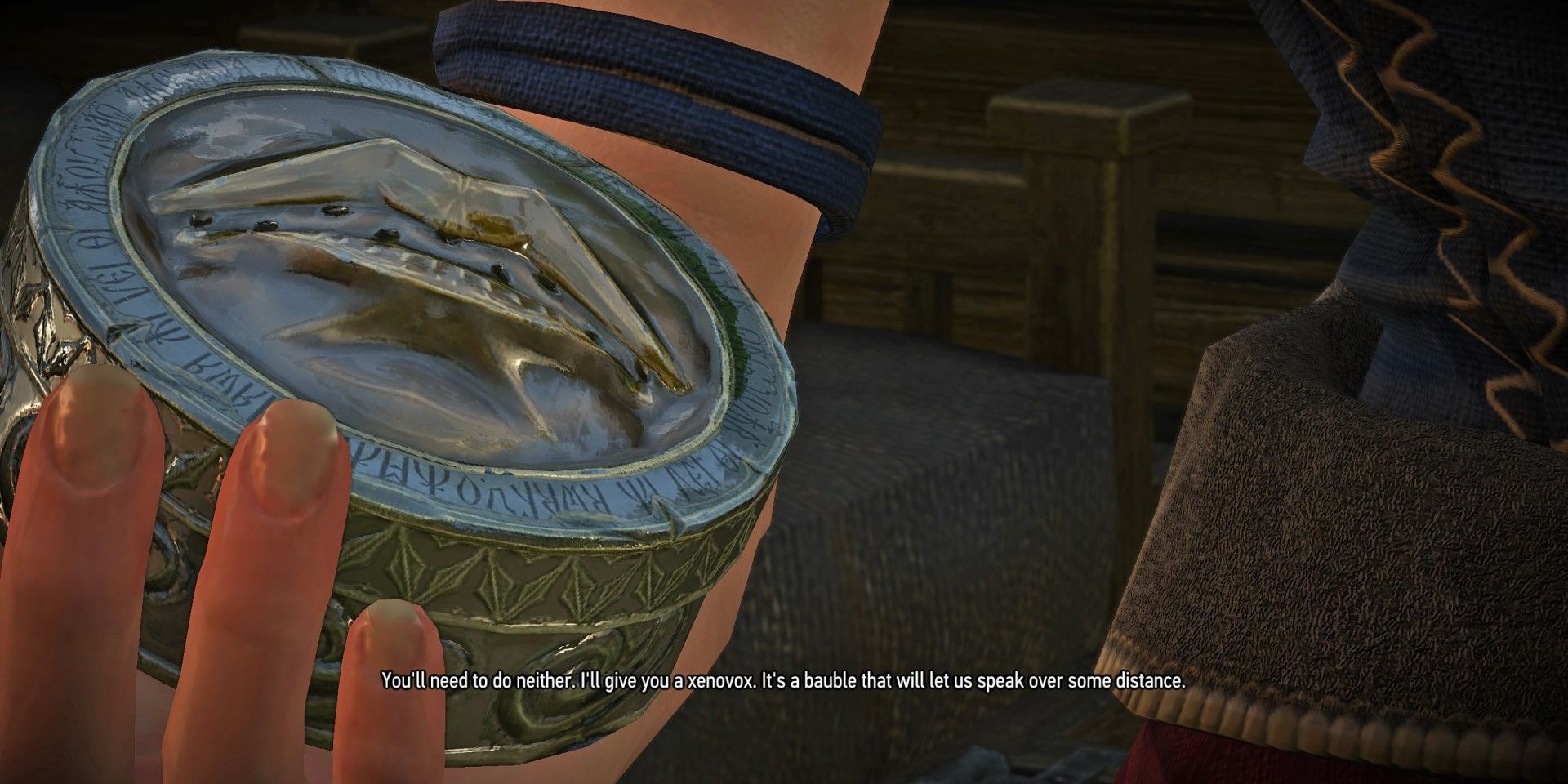
Side quests in The Witcher 3 typically require Geralt to perform some degree of investigation. In a "Towerful of Mice," Geralt attempts to break the curse afflicting Fyke Isle, a spooky and plague-ravaged land. Along the way, he meets characters named Annabelle and Graham. A communication device called a xenovox is also found.
Taken together, these are all clever allusions to Alexander Graham Bell, the inventor of the telephone. The characters Annabelle and Graham are a play on words that reference the inventor's name. The xenovox is a further analogy to the telephone.
5 Sigmund Freud
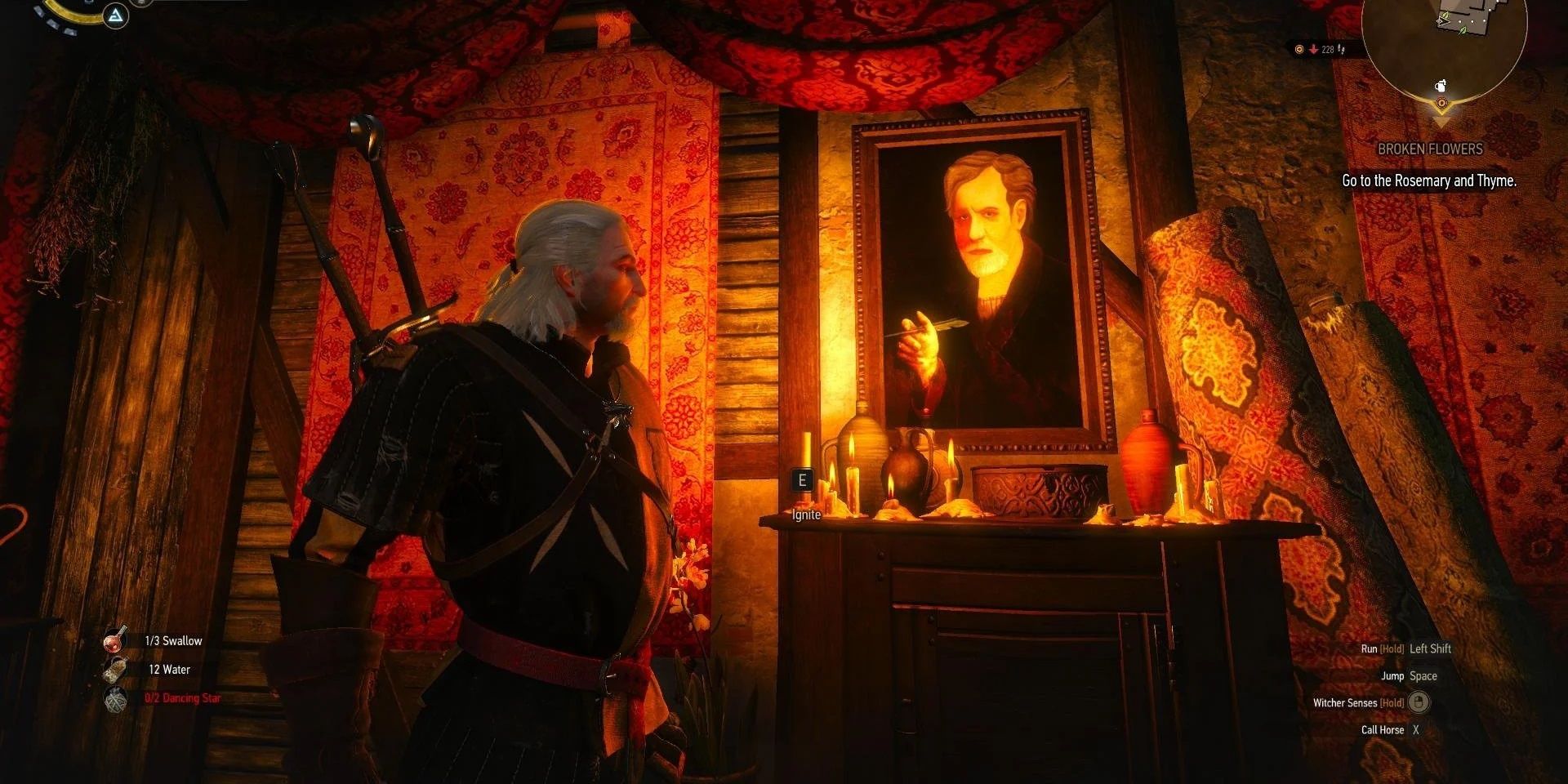
Geralt can get mixed up into all sorts of trouble in Novigrad. One quest, called "Novigrad Dreaming," tasks the player with exorcising a supposedly haunted house. With that task finished, Geralt must travel to the Golden Sturgeon to try to obtain more information on Ciri.
RELATED: 10 Hidden Secrets Many Players Still Haven't Found In The Witcher 3
A detail that's easy to overlook is a portrait hanging on the wall inside the tavern. The painting bears a striking resemblance to Sigmund Freud, a famous psychoanalyst of the late 19th and early 20th centuries. The fact that the quest has to do with dreaming is also poignant.
4 David Attenborough
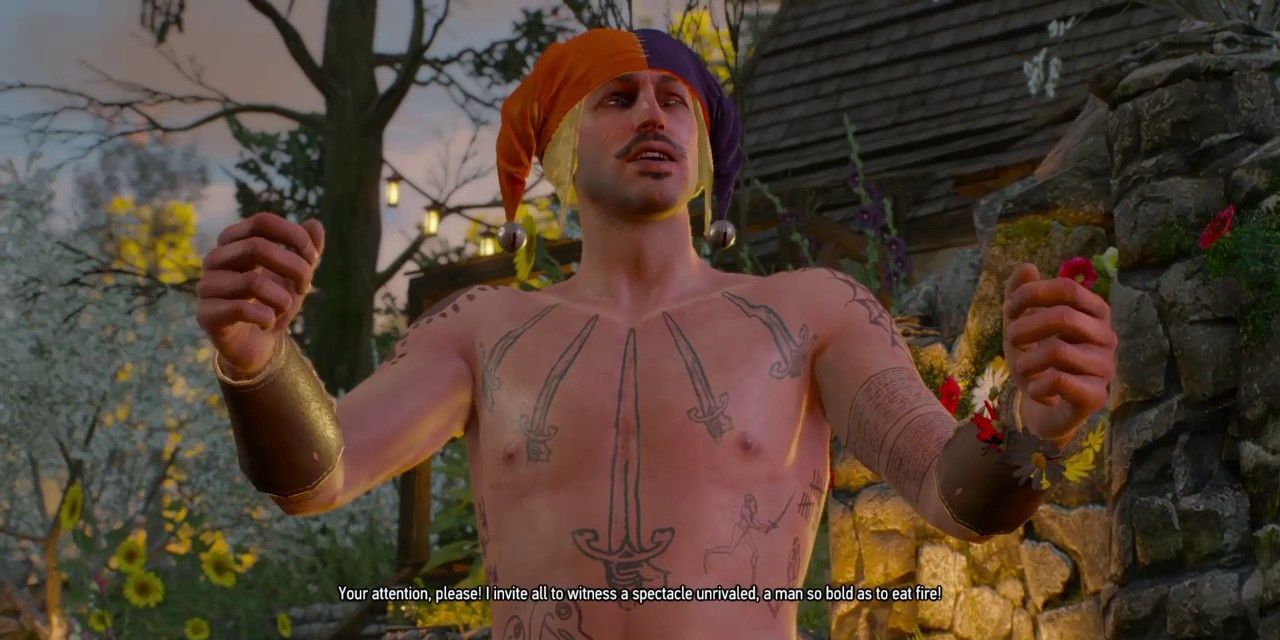
The quest "Dead Man's Party" in the Hearts of Stone expansion sends Geralt on a wild ride of debauchery and ghostly possession. There are many festivities to be had at the party that Geralt and Shani must attend as part of the quest. A group of fire swallowers can be encountered, one of whom is named David Artensborrow.
This name, of course, is an obvious reference to David Attenborough, the famous natural historian and broadcaster. Fans are most likely able to instantly recognize Attenborough's voice, as his work as a documentary narrator is world-renowned.
3 Cyrano De Bergerac
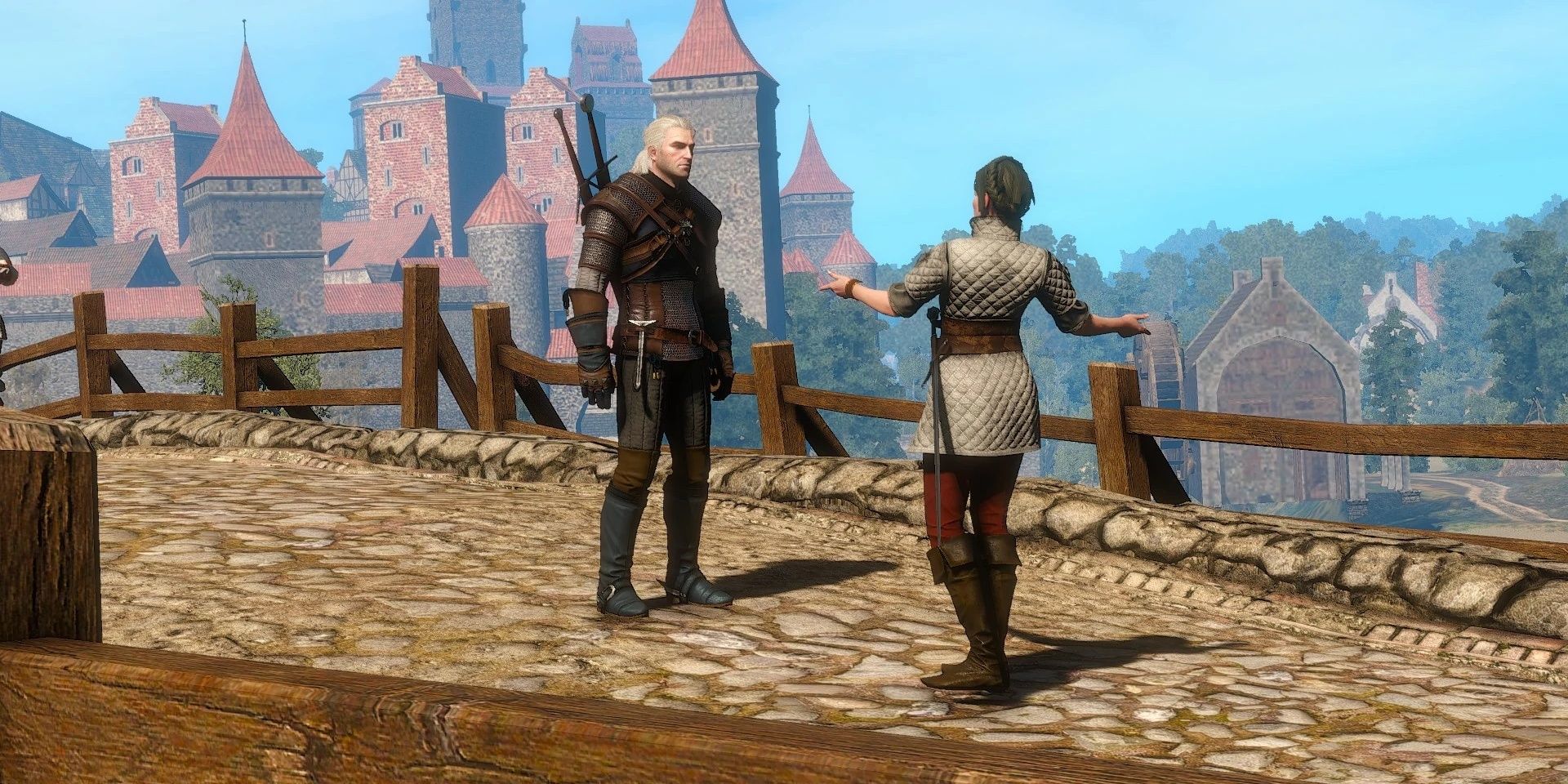
In the quest "Fencing Lessons," Geralt agrees to provide dueling lessons to the spoiled aristocrat, Rosa var Attre. As part of a ruse to get rid of her bodyguard, Geralt is introduced as Frederick Francis de Bergerac, Rosa's supposed fencing instructor.
The fake name that gets used during this exchange is actually a carefully veiled reference to Cyrano de Bergerac, a noted 17th-century French scholar and author. Among his many other accomplishments, de Bergerac was also an avid duelist.
2 Schrodinger's Cat
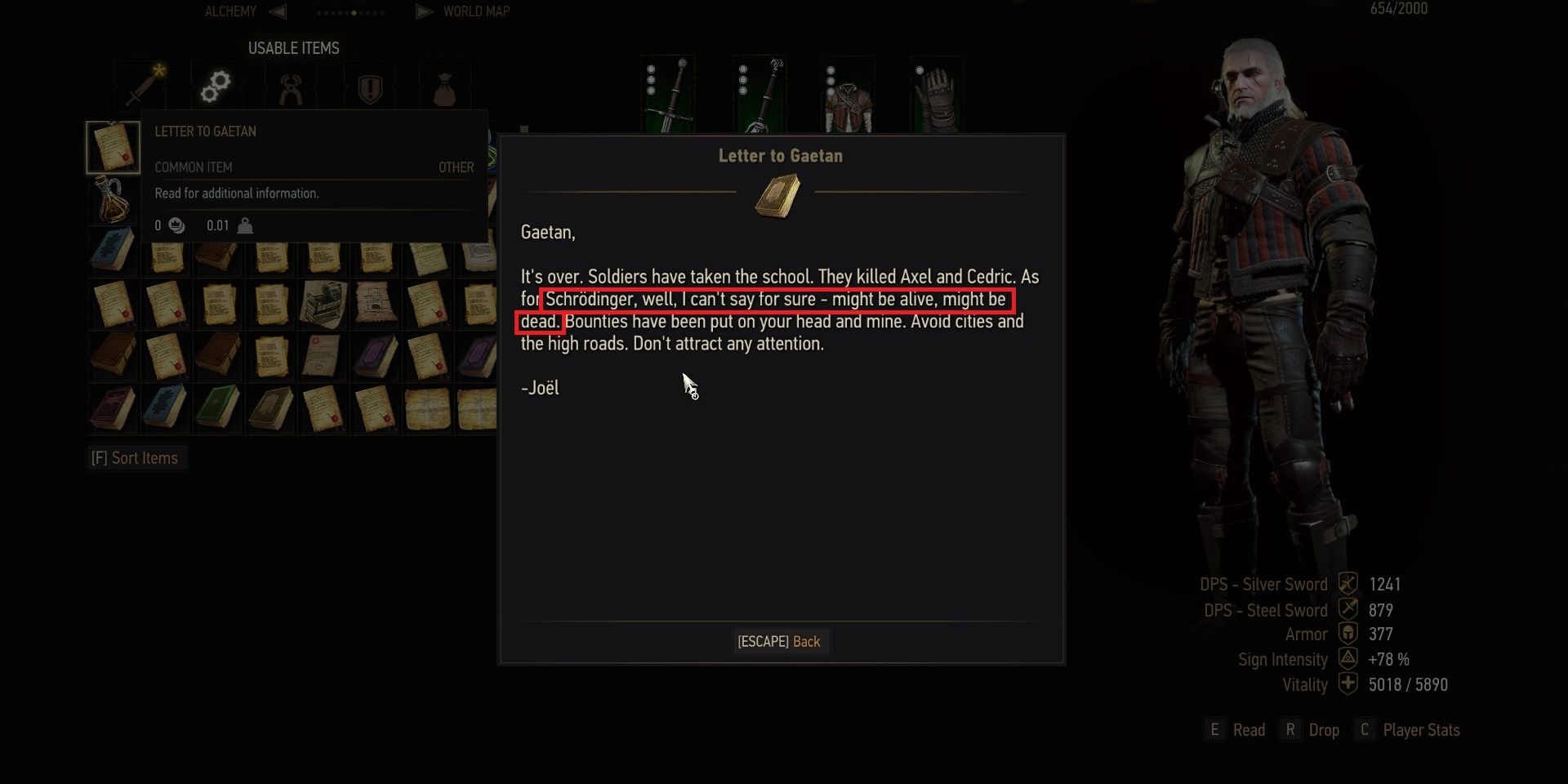
Throughout his travels, Geralt may chance upon a fellow witcher named Gaetan. After hearing his story, Geralt has the option to either fight or spare the witcher. Choosing the latter option reveals a humorous easter egg in the form of a note.
The note reads, "Soldiers have taken the school. They killed Axel and Cedric. As for Schrodinger, well, I can't say for sure-might be alive, might be dead." This is a reference to the well-known Schrodinger's Cat experiment of quantum mechanics conducted in 1935.
1 Gdansk, Poland
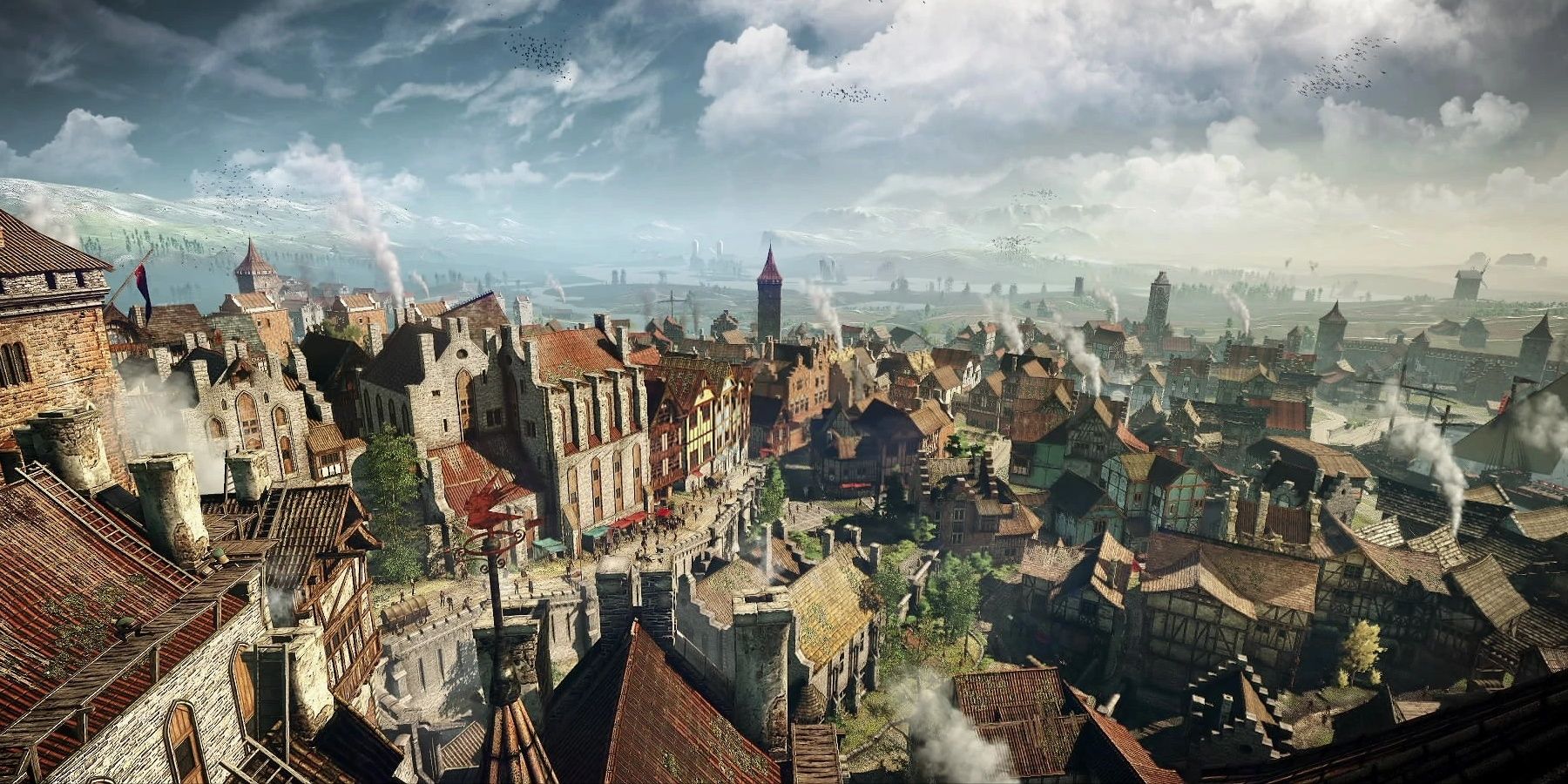
Novigrad is a bustling Redanian port city where all manner of trade and business takes place. It's described as a free city and thus exercises a remarkable degree of autonomy from the Kingdom of Redania. In fact, much of Novigrad is actually based on a real city.
Gdansk, Poland serves as Novigrad's inspiration. The architecture of this port city bears many similarities to that of Novigrad. In addition, Gdansk was once considered a free city-state within the larger framework of the Holy Roman Empire as well as the Kingdom of Poland. It was also a member of the Hanseatic League, a collection of market cities during the Middle Ages.
NEXT: 10 Unresolved Mysteries & Plot Holes Left Hanging In The Witcher 3

